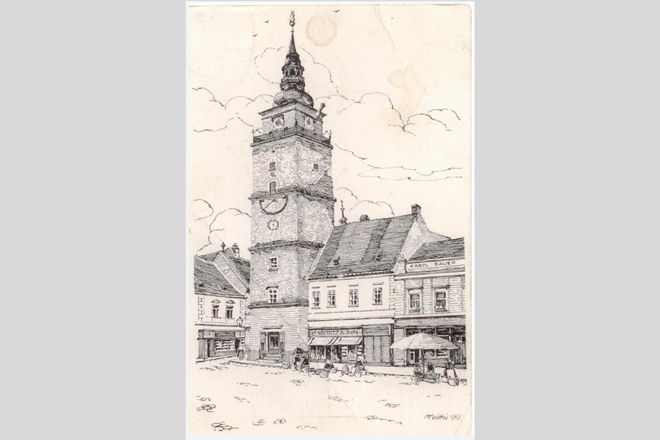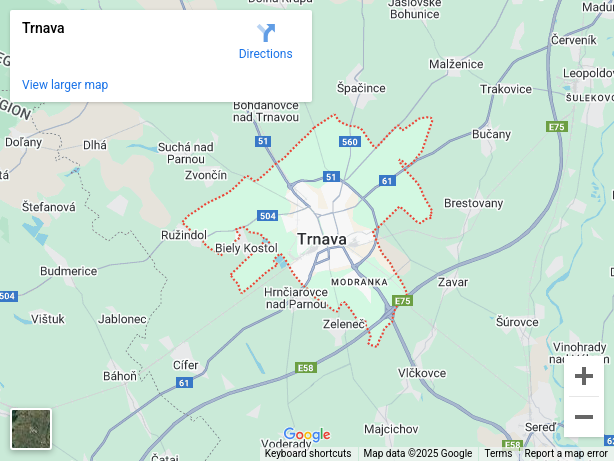Czech painter Aleš Krátký worked under the Small Carpathian mountains at the beginning of the 1920s. His series of pictures from the wine-growing town of Modra, which were published on period postcards, became particularly famous.
Krátký also painted the nearby city of Trnava. In this postcard, we can see its dominant feature, the tower.
The tower was built in 1574 under the lead of Master Jacob. The 16th century was a time of acute Ottoman danger, and the construction of the tower was probably made primarily as a defence tool against this enemy.
Trnava lies on a vast flatland; from such a height as the tower one can see far and wide. But the city tower protected the city also against that equally dangerous enemy to mediaeval towns — fire.
Thus, two bells hung in its bell tower. Guardians also had a megaphone at their disposal, with which they announced the location of the fire. The news was announced in two languages, just to make sure: in Slovak and in German.
Guardians lived in the bell tower, together with their families, and thus they needed to have all things necessary for everyday life; domestic fowl was also bred here, for example, including a rooster that also served as an alarm clock.
Without him, they had to rely on period technology – which meant a sundial. Starting in 1729, a mechanical version of alarm clock was made there by Fritz Langer.
This article was first published by The Slovak Spectator on September 16, 2015. It has been updated to be relevant today.


 Trnava bell tower (source: Bratislav Chovan)
Trnava bell tower (source: Bratislav Chovan)
